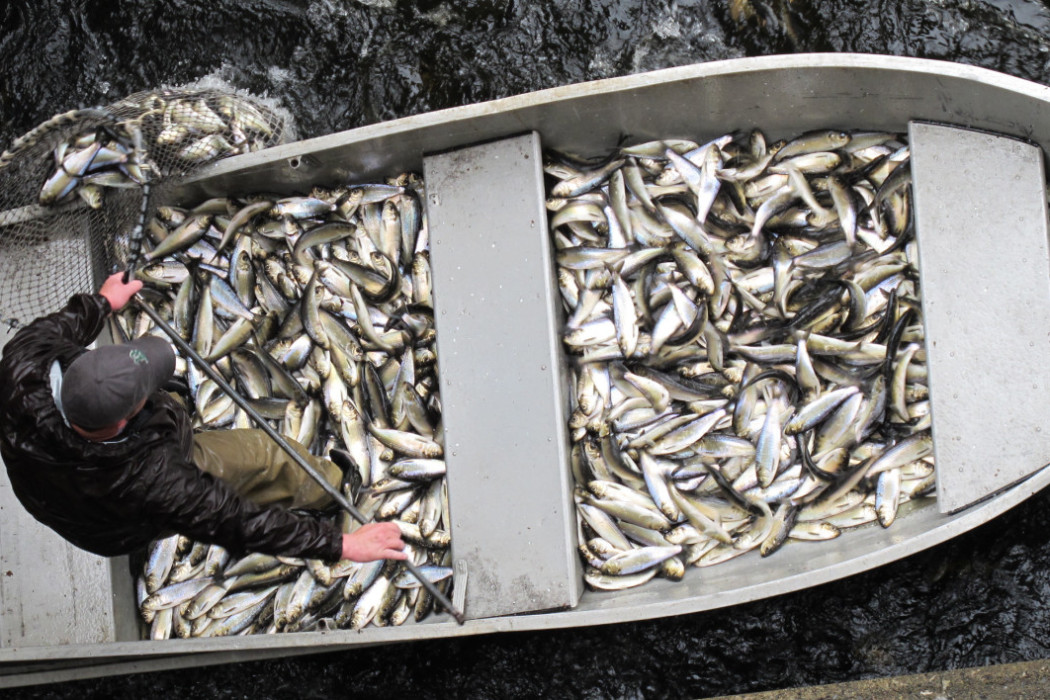Bad things happen when dams disconnect lakes and rivers from the sea, and one of the worst is the near extirpation of alewives.
From the Canadian Maritimes to North Carolina these sea-run herring sustained all manner of marine fish, birds and mammals. As spawners ascended rivers in spring, they fattened emaciated Atlantic salmon returning to the salt, then went on to feed a host of inland creatures including turtles, eels, bass, pickerel, minks, otters, eagles, ospreys, loons, diving ducks, kingfishers, egrets and herons.
One tends to refer to alewives in the past tense, but that usage is no longer appropriate in Maine — the state with more potential alewife spawning and nursery habitat than all others combined and the one state that is having spectacular success at recovery.
Now, alewives are pouring back into the St. Croix system, but it’s too early to quantify the ecological response.
Not so on the Sebasticook, a major tributary of the Kennebec. Florida Power and Light decided it was too expensive to construct required fish passage at its low-production, century-old Ft. Halifax hydro dam in Winslow.
So in 2008 it tore the dam down. This after a vicious fight with landowners who wanted to keep their docks and shorelines and bass anglers who wrongly imagined that smallmouths, best adapted to running water, do better in impoundments.
Now alewives (along with blueback herring, American shad, striped bass, Atlantic salmon, Atlantic sturgeon, eels, white suckers, lampreys and brook trout) have access to much of their historic spawning grounds in the 1,000-square-mile watershed.
The Sebasticook’s alien smallmouth bass grow to trophy size, and they’re more prolific than ever.

